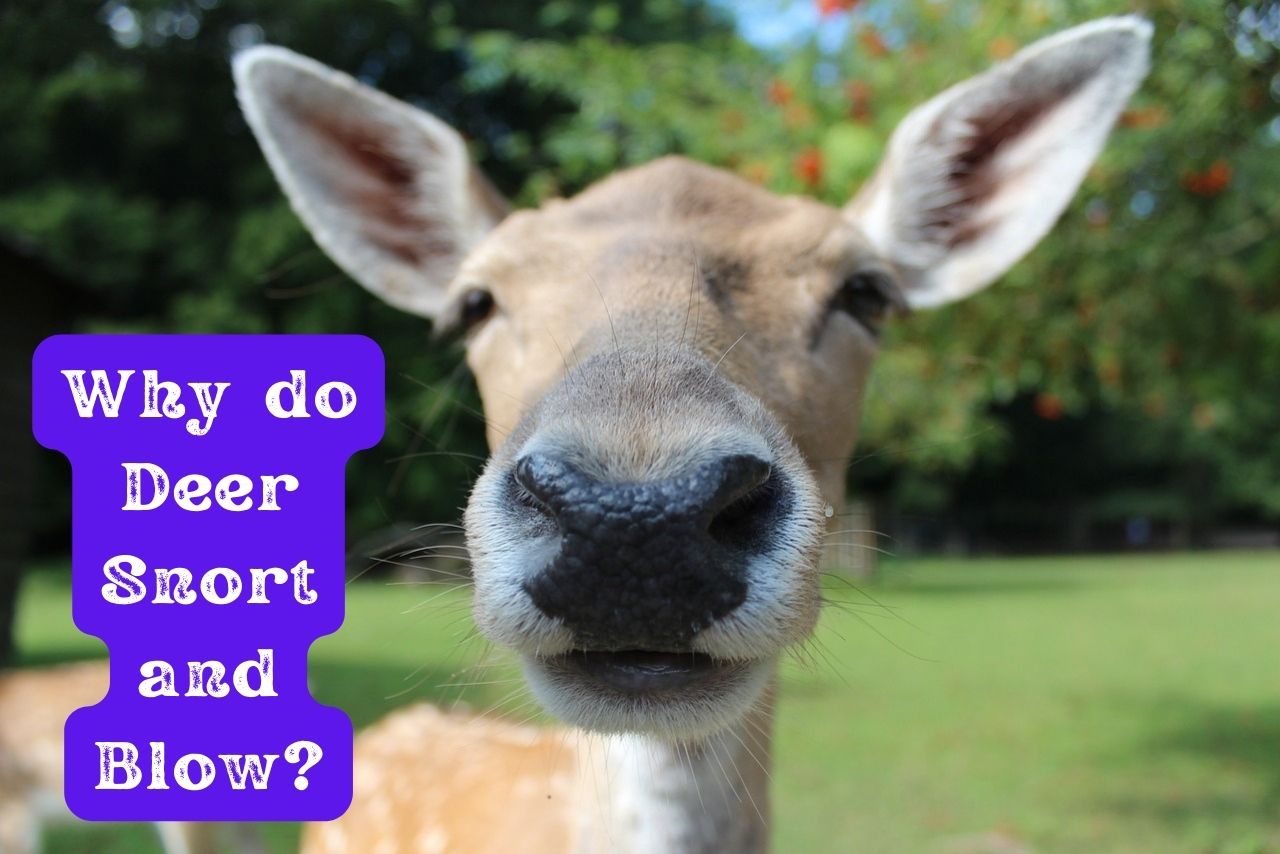If you’ve ever spent any time around deer, you’ve surely heard them snort or blow out their noses before.
While the natural assumption may be that snorting is a defense mechanism, there are actually several reasons why deer engage in this behavior.
Regardless of the reason, this forceful expulsion of air in a “sneeze-like” fashion is sure to get your attention and keep you from approaching the animal.
Without further ado, we will answer the question, Why do deer snort and blow?
Deer snort and blow for a variety of reasons including: Sending a warning signal, A response to being startled, Expressing discomfort, or Establishing dominance. All of these reasons will cause deer to make a loud snorting or blowing sound that is sure to get the attention of any nearby animals.
Sending a Warning Signal
One of the main reasons deer snort and blow is to send a warning signal to an approaching predator.
This is deer’s way of saying, “Hey, I’m here. I see you. Back off now!”
The intention of this loud sound is to scare approaching animals so that they don’t get any closer.
A loud snort or blow also alerts the other members of the herd of any potential danger.
This warning signal allows the herd to make a coordinated response which ultimately results in increased safety.
Just ask any hunter and they’ll tell you all about how many times they’ve been snorted at!
We highly recommend that you give deer more space if you ever encounter this sound!
Check out this video of a deer snorting:
Startle Response
Another reason why deer may blow or snort is simply because they were caught off-guard.
Have you ever been scared by someone hiding around a corner and shouting “BOO” at you?
Surely you jumped back and initially got angry at the person for doing that to you.
Well, snorting or blowing is exactly how deer express their frustration.
When they are surprised they will use their noses and nasal passageways to make a loud sound to say, “Hey! You scared the heck out of me!”
Needless to say, it’s a good idea to back away from the animal after this because they can be very unpredictable after being startled.
Speaking of unpredictable, look at this deer jumping through a window when it was startled by a motion-activated deer sprinkler:
Expressing Discomfort
Deer sometimes use snorting and blowing as a means of expressing their discomfort.
This may include things such as a loud sudden sound. Deer are sure to let you know they’re unhappy by snorting or blowing in response.
Another thing that really gets under deer’s skin are unfamiliar odors. If they detect anything off in their vicinity, they are sure to snort to let you know about their unhappiness.
A third reason why deer may express discomfort is if they are feeling physical discomfort.
How many of you have been uncomfortable while sick and have caught yourself moaning over it? Snorting and blowing is akin to moaning for deer when something is agitating them.
The last reason why deer may be experiencing discomfort and subsequently snort in response to it is due to environmental changes. Sudden shifts in weather or changes in terrain may frustrate deer and cause them to lash out with a snort to let everyone know.
In particular, a sudden cold front is a huge source of discomfort for deer. While these are extremely resilient animals, they will often blow or snort to express their unhappiness in these conditions.
Establishing Dominance
Last but not least, deer may use snorting and blowing as a way to establish dominance over other members in the herd or deer approaching from other herds.
This behavior is mostly seen by males (especially during mating season).
While snorting isn’t the primary way deer assert their dominance, it certainly makes a compelling argument when accompanied by other behaviors such as stomping, head bobbing, or charging.
If you catch a deer snorting or blowing in your direction, common sense says to get out of their way as it’s impossible to tell what they’ll do next!
Final Thoughts
You now have your answer to, Why do deer snort and blow?
The 4 main reasons being: To send a warning signal, A response to being startled, Expressing discomfort, or Establishing dominance.
Regardless of the reason, the best thing to do in these situations is to give deer plenty of space and leave them be.
This behavior is always in response to some form of frustration and it’s never a good idea to approach them, especially while in this state!
We hope you found our article informative and encourage you to ask any further questions or share your experiences in the comment section below!
Now that you know why deer can make so much noise with their noses, check out how they can also move around in silence.

